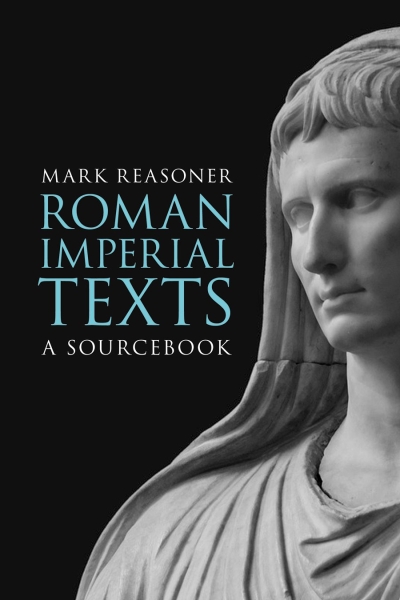A selection of the most important sources for the cultural and political context of the early Roman Empire and the New Testament writings, Roman Imperial Texts includes freshly translated public speeches, official inscriptions, annals, essays, poems, and documents of veiled protest from the Empire’s subject peoples.
Contents:
Preface/Introduction/Timeline
Part 1. Divine Sons and Their Gospels
Augustus • Tiberius • Caligula • Claudius • Nero • Vespasian • Titus • Domitian
Part 2. Identity in Community
Sample Letters from the Mediterranean World • Documents from Collegia and Synagogues • Cities of the New Testament World
Part 3. The Eternal City and Its Hold on the World
Praise for Rome • Voices of Dissent • Hidden Transcripts
Contents:
Preface/Introduction/Timeline
Part 1. Divine Sons and Their Gospels
Augustus • Tiberius • Caligula • Claudius • Nero • Vespasian • Titus • Domitian
Part 2. Identity in Community
Sample Letters from the Mediterranean World • Documents from Collegia and Synagogues • Cities of the New Testament World
Part 3. The Eternal City and Its Hold on the World
Praise for Rome • Voices of Dissent • Hidden Transcripts
- Format Paperback
- ISBN 9780800699116
- eBook ISBN 9781451438604
- Pages 224
- Dimensions 6 x 9
- Publication Date November 1, 2013
Endorsements
“From Matthew to Revelation, the New Testament presents good news that can be adequately interpreted only in view of its setting in the Roman Empire. Scholars, students, and all readers of the New Testament are therefore in Mark Reasoner’s debt for preparing this first-rate collection of relevant Roman imperial sources, presented fairly with minimal interpretation. I trust it will receive wide circulation and use.”
—Michael J. Gorman
St. Mary’s Seminary & University
“There is currently a great deal of debate about the ways in which the New Testament writers responded to the Roman Empire. To understand and assess the debate it is vital for students (and scholars!) to encounter at first hand the texts and artefacts that inform us about that imperial context. With extensive quotation of primary sources and well-informed commentary and explanation, Mark Reasoner has provided an excellent sourcebook to enable us to do just that. This is a very welcome resource.”
—David G. Horrell
University of Exeter
"This book is a long-needed and essential tool for scholars, teachers, and students who explore the rise of Christianity from ‘the grandeur that was Rome.’ A helpful introduction explains the contested place of Roman Imperial sources in New Testament scholarship and argues persuasively that careful attention to sources such as these is an important, too often neglected, stimulus for assessing ways in which the New Testament ‘includes or omits’ Rome in its multiple frames of reference. The book is an especially welcome enhancement of the Roman sources collected in more general New Testament ‘backgrounds’ anthologies and will be as useful in the classroom as in the study.”
—Alexandra Brown
Washington and Lee University
—Michael J. Gorman
St. Mary’s Seminary & University
“There is currently a great deal of debate about the ways in which the New Testament writers responded to the Roman Empire. To understand and assess the debate it is vital for students (and scholars!) to encounter at first hand the texts and artefacts that inform us about that imperial context. With extensive quotation of primary sources and well-informed commentary and explanation, Mark Reasoner has provided an excellent sourcebook to enable us to do just that. This is a very welcome resource.”
—David G. Horrell
University of Exeter
"This book is a long-needed and essential tool for scholars, teachers, and students who explore the rise of Christianity from ‘the grandeur that was Rome.’ A helpful introduction explains the contested place of Roman Imperial sources in New Testament scholarship and argues persuasively that careful attention to sources such as these is an important, too often neglected, stimulus for assessing ways in which the New Testament ‘includes or omits’ Rome in its multiple frames of reference. The book is an especially welcome enhancement of the Roman sources collected in more general New Testament ‘backgrounds’ anthologies and will be as useful in the classroom as in the study.”
—Alexandra Brown
Washington and Lee University
